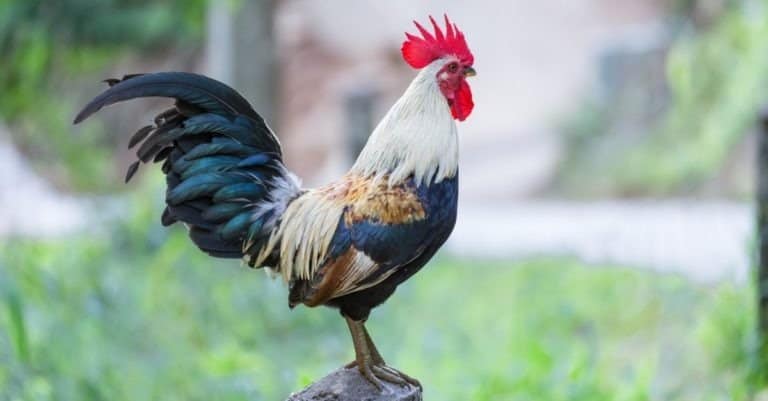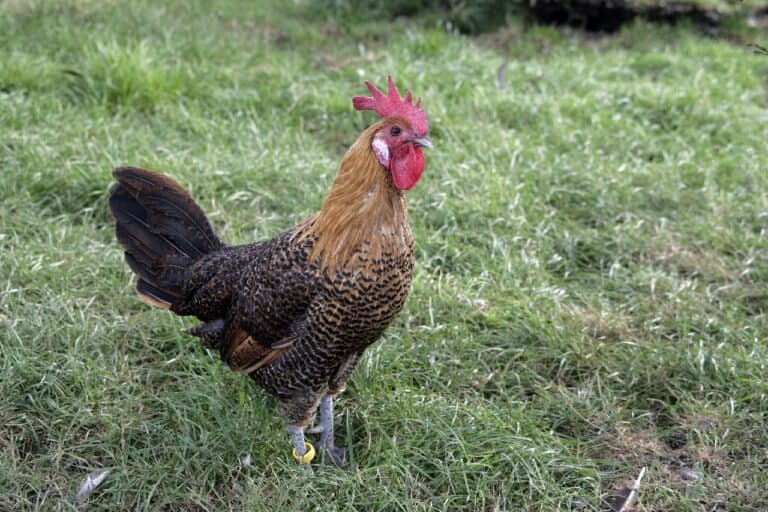Breeding frizzle chickens can be an incredibly rewarding experience for poultry enthusiasts. Frizzle chickens are known for their unique feather pattern, where the feathers curl outward rather than laying flat. This trait gives them a distinctive and charming appearance. If you’re interested in learning how to breed a frizzle chicken, you’re in the right place. This guide will walk you through every step of the process, ensuring you’re well-equipped to embark on this breeding adventure.
The term ‘frizzling’ refers to the genetic mutation that causes the feathers to curl. It’s important to note that breeding frizzle chickens requires a good understanding of genetics and responsible breeding practices. We’ll cover everything from understanding frizzle genetics to setting up the perfect breeding environment.

Understanding Frizzle Genetics
What is Frizzling?
Frizzling is a genetic mutation that affects the feather structure. Instead of lying flat, the feathers curl outward, creating a unique appearance. This trait is caused by the presence of a specific gene, the Frizzle gene (F).
Genetic Terms to Know
- Frizzle Gene (F): The gene responsible for the frizzling trait.
- Normal Feather Gene (n): The gene that produces normal feathers.
- Heterozygous (F/n): A chicken carrying one frizzle gene and one normal feather gene.
- Homozygous (F/F): A chicken carrying two frizzle genes.
Breeding Outcomes
When breeding frizzle chickens, it’s important to understand the potential outcomes depending on the combination of genes:
- Normal Feathered Chicken (n/n): No frizzle gene, normal feathers.
- Frizzle Chicken (F/n): One frizzle gene, frizzled feathers.
- Frazzle Chicken (F/F): Two frizzle genes, extremely curled and brittle feathers.

Preparing for the Breeding Process
Choosing the Right Breeders
Selecting the right breeders is crucial for successful frizzle chicken breeding. Choose healthy chickens with strong genetics. Avoid using frazzle chickens (F/F) as breeders, as their feather quality is typically poor, and they are more prone to health issues.
Setting Up a Suitable Environment
Creating the perfect environment for breeding chickens is essential. Ensure the breeding coop is clean, spacious, and well-ventilated. Provide adequate nesting boxes and roosting space. Proper lighting and temperature control are also important factors.
Feeding for Fertility
A nutritious diet is vital for the fertility and health of your breeding chickens. Provide a balanced diet consisting of high-quality feed, fresh greens, and clean water. Supplements like calcium and vitamins can also boost fertility.

The Breeding Process
Mating Techniques
When it comes to mating frizzle chickens, there are a few techniques you can use:
- Natural Mating: Allowing the chickens to mate naturally in a controlled environment.
- Artificial Insemination: A more precise method where semen is collected from the rooster and manually introduced to the hen.
Observing Mating Behavior
Understanding mating behavior is essential. Roosters will often perform a courtship dance, and hens will crouch to indicate their readiness to mate. Observing these behaviors can help you determine the best time for mating.

Incubating and Hatching Eggs
Collecting Eggs
Collect eggs daily and store them in a cool, dry place. Avoid washing the eggs, as this can remove the protective bloom that preserves freshness.
Incubation Process
Set up an incubator with proper temperature and humidity levels. The ideal temperature for chicken eggs is around 99.5F (37.5C) with a humidity level of 50-55%. Turn the eggs multiple times a day to ensure even development.
Hatching and Brooding
After about 21 days, the eggs will begin to hatch. Provide a brooder with warmth, food, and water for the newly hatched chicks. Maintain a temperature of around 95F (35C) and gradually decrease it as the chicks grow.
Raising Frizzle Chicks
Feather Development
Frizzle chicks will start to show their unique feathering as they grow. It’s important to monitor their feather quality and health closely.
Nutrition for Chicks
Provide a high-protein chick starter feed to support healthy growth. Fresh water and occasional treats like small insects can also benefit their diet.
Managing Health and Wellness
Common Health Issues
Frizzle chickens, especially frazzles, are more susceptible to feather breakage and other health problems. Regularly check for signs of illness or parasites and take necessary steps to maintain their health.
Feather Care
Gentle handling and proper care can help maintain the quality of frizzle feathers. Ensure their living conditions are clean and safe to prevent feather damage.
Maintaining the Breeding Flock
Record Keeping
Keep detailed records of your breeding pairs, their genetics, and the outcomes of each breeding attempt. This information will help you make informed decisions for future breeding programs.
Continuing the Breeding Process
Breeding frizzle chickens is an ongoing process. Evaluate each generation and make adjustments to your breeding plan as needed to maintain healthy, high-quality birds.
Frequently Asked Questions (FAQ)
What is a frizzle chicken?
A frizzle chicken is a chicken with a genetic mutation causing its feathers to curl outward, creating a unique appearance.
Can I breed two frizzle chickens together?
It’s not advisable to breed two frizzle chickens because it can result in frazzles, which have brittle feathers and health issues.
How do I care for frizzle feathers?
Handle frizzle chickens gently, ensure they have clean living conditions, and provide a nutritious diet to maintain feather health.
For more detailed information on chicken breeds, visit the Tractor Supply Chicken Breed Directory.
As an Amazon Associate, I earn from qualifying purchases.
As an Amazon Associate, I earn from qualifying purchases.









